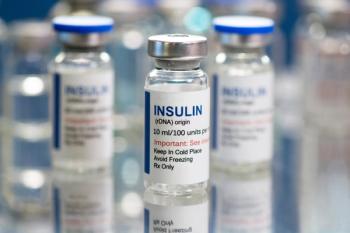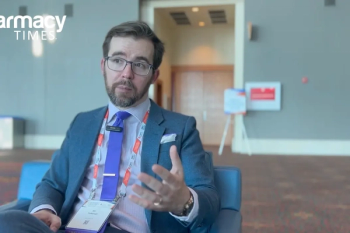
Expert Discusses Health System Specialty Pharmacy Role on Implementing Population Health Management for Migraine Patients
Amanda Hickman, PharmD, MPH, MSCS, discusses the clinical assessment to lower migraines (CALM) in an HSSP setting.
Pharmacy Times interviewed Amanda Hickman, PharmD, MPH, MSCS, a neurology-focused central support pharmacist at CPS on implementing population health management for migraine patients in an HSSP setting. Hickman discussed why the population health management protocol in migraine management was limited, along with the increased demand on pharmacists due to the one size fits all protocol. Hickman emphasized the need of finding a way to provide high-touch and excellent services while also using the staff time more efficiently. Additionally, Hickman discussed the importance of patient’s awareness, ensuring that they know HSSP can support every aspect of their health care journey.
Pharmacy Times: Can you introduce yourself?
Amanda Hickman: I'm Amanda Hickman and I am a neuro-pharmacist with the CPS HSSP services, so the hospital specialty pharmacy services. [I’ve] been around for a little bit, I help with protocol development in the neuro space, research outcomes, and [I also] support our staff at the various hospitals, making sure everyone has the resources that they need.
Pharmacy Times: Why do you believe the population health management protocol in migraine management is limited?
Hickman: …One of the main details we have to work with—especially when doing protocol development—is to provide the best services we possibly can for patients without burning out our people. So [I] was looking around to see what had been implemented in the migraine space itself, and [I] didn't really see any official programs. Now, people could be naturally doing this, people could have protocols in their neuro services to manage the migraine patients—if they do, please publish so that we can see what we're all doing—but I really didn't see many instances and references to people applying the population health management protocols. And for anyone who kind of wants to know how that is defined, it's basically using patient details to stratify them and that determines what services [patients] get.
So, I like to summarize it as it allows the pharmacist to provide the services to patients that they need, versus doing a 1 size fits all protocol.
Pharmacy Times: Can you give a brief overview on why the observational study was conducted and the findings?
Hickman: We started looking into this because this is a high-density population. If you look at our poster, the study population before basically tripled in the number of patients we enrolled within even a year, and it was getting to the point where that 1 size fits all protocol was really demanding on our staff. And so, we wanted to find a way to provide the high-touch services and the excellent services that we do while also more efficiently using the staff time because migraine is not the only disease state we manage, we manage other neuro conditions like multiple sclerosis, Parkinson, epilepsy, all of those. We wanted to make sure that all patients got the services that they needed. So [we] looked into population health management and we also have other disease states where we've applied this philosophy, and it worked well. So, in our diabetes population, chronic obstructive pulmonary disease, asthma, we set this protocol and the staff are able to manage patients, in fact, more patients than they would have been able to meaning we can help more people, but they're also still around too, so they didn't get burned out and are able to care for the patients that they have under their services.
So, in terms of the methods of this, we looked at our 1 size fits all program, a year of that, and then we implemented this population health management program in 2022. So, we did a year of those patients as well, so [there was] no crossover. The patient populations were separate, these were all patients who were new to our services within that timeframe. We set a certain threshold in certain metrics in our migraine patients to list them as either high-risk or low risk. Another way of saying that is are they clinically stable or are they not. And that determined what amount of follow up the patients had, and of course, the pharmacists could do what they felt the patient needed, but it gave them permission to do that versus setting a kind of minimum protocol there. When we gathered that data and those thresholds, and we particularly looked at migraine days as kind of a “how well did we do in terms of our reductions.” There was no statistical difference between the population in terms of their outcomes, which I viewed as a win because we were already doing well, and we maintained that. But then when I looked at the models for what the staff time requirements were that decreased by about 43%. So, that's why we were able to manage increasing our population by more than 3 times because we had basically focused our time on those patients that needed it.
Pharmacy Times: How did this study impact the HSSP practice, and how can it create further impact in the future?
Hickman: It's very exciting I feel in my specialty, because there's so much potential in neuro for pharmacy to not only help the patients, but also help our provider partners. But we have to figure out where do we fit, what are we going to do, and how do we help as many patients as possible. So, this study has actually helped me decide that a program like this can work, we may still study thresholds and tweak things a little bit, but in as a whole, the program really helped the staff and also continued to help the patients. And so, I'm looking to expand it into other disease states, so, seeing if we can expand the number of patients, we care for with a model like this so that, again, we also want to make sure our pharmacists and liaisons are happy and able to do good work and not burn them out.
Pharmacy Times: How have high-touch HSSP engagement models improved outcomes across disease states?
Hickman: Hopefully, you all will be able to see some of the posters that we have at mid-year. We've shown benefit in patient outcomes, we've shown benefits and adherence in med access. We're also hoping to show what services like this can do in a patient impact report that'll be coming out soon. But it's, all about the patients and all about our providers, and making sure that everyone can get the meds that they need, that they do well on them, and that we're there to support them in every aspect of their health care journey. Not just the dispensing of the medications, which so many of our new partners kind of picture us as doing.
Pharmacy Times: Is there anything you would like to add?
Hickman: [I] just really want to emphasize that it's really an open world for what pharmacy can do, and it's so exciting when we find philosophies and theories about how we can care for patients in new ways, and just really open our doors to show we are 1 of the most accessible health care professions out there. I want us to keep doing that and really keep helping people.
Newsletter
Stay informed on drug updates, treatment guidelines, and pharmacy practice trends—subscribe to Pharmacy Times for weekly clinical insights.










































































































































































































